Introduction to Voodoo
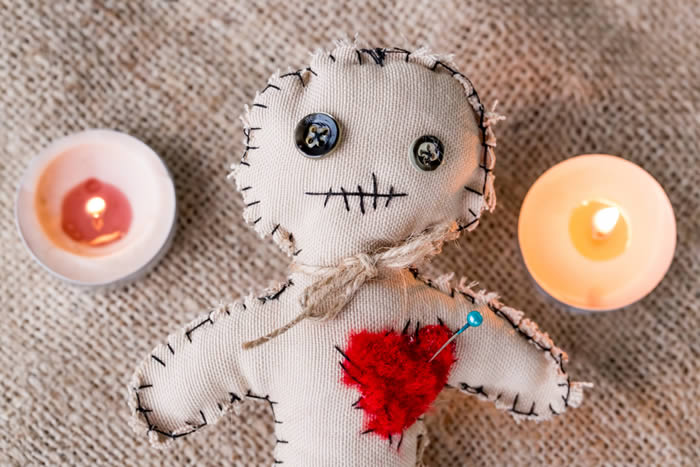
Magic comes in many different forms and worship comes from many different cultures. Voodoo, for example, was born in West Africa, moved to Haiti, but it’s also shifted as it was introduced to the United States. In doing so, this practice has become not only more accepted but also more widespread throughout the country. No matter if it’s called conjure or rootwork or hoodoo, the practice of voodoo persists and aids those who want to change their lives for the better.
What is Voodoo?
Voodoo has been defined in many different ways, but the most common and the most accepted is that this is a practice of worshipping one God and spirits, as well as angels, ancestors, and saints. This practice is a blend of folk magic as well as Catholic saint worship, Native American practices, as well as witchcraft. Nowhere in this tradition is the worship of evil or evil spirits; it focuses only on worshipping God.
But there are many ways in which Voodoo has been misrepresented in the media. Voodoo practitioners are often portrayed as sacrificing animals, for example, but many voodoo organizations and societies now note that this is an outdated practice that has no place in the modern world.
What can Voodoo do?
One thing that sets Voodoo apart from other practices is that it uses charms and spells to change the current events. Like witchcraft, Voodoo focuses on drawing from the natural energy of the world and allows the universe to guide the intention into realization. With prayers, with mojo bags, with other charms, etc., Voodoo practices are traditional in their creation and usage, coming from many hundreds of years (probably even more) of home-based practice.
From the beginning of its use, Voodoo has been a practice of using the forces of nature to help create change and balance. Since there is no scripture or singular ‘right way,’ this practice is ever-evolving and might be different from one family to another. In addition, Voodoo recognizes there are two worlds: the seen and the unseen. Remember, this doesn’t mean there is a good and a bad world, just different spaces in which spirits and energies live.
Who practices Voodoo?
Within the practice of Voodoo, there are priests (Hougan), priestesses (Manbo), and ordained clergy members, helping to facilitate rituals and to aid with rootwork. While these practitioners might be trained and have a lineage of Voodoo practices in their life, it is also clear that those who are willing to learn the traditions are also welcome to practice the art of Voodoo.
What are the basic concepts of Voodoo?
While Voodoo is a complex and longstanding tradition that takes years to understand, the basic tenets are these:
- There is one God — Bondye
- Loa, the twins, and the dead are also important figures.
- Healing is the primary function of the practice.
Within Voodoo are the opportunities to engage in spiritual rituals and practices, while also working directly with spirits by taking them into the priest or priestess.
No matter what your fascination with Voodoo, this is a practice that started in Africa and the Caribbean before it came to the United States as part of the Creole tradition. There are tricky parts to its practice as some state that only those of the lineage should practice the rootwork. While others believe the rootwork and its applications can be shared freely.
In your heart, if you feel the call of Voodoo to aid in the healing of your life, then it is also calling to you and giving you its blessing to move forward in alignment with the principles. Take time to learn what you can about the practices before you use them and give thanks to those who came before who aided in your personal healing.
The History of Voodoo
To define Voodoo is to chase a shadow. With its complex history and varied interpretations of its evolution, what may be true for some practitioners may not be true for all rootworkers and clergy. Sometimes spelled Vodou, Voudou, or Voudun, Voodoo is likely to be as old as Africa is, with its beginnings starting from the beginnings of humankind. The word itself, Voodoo, is said to mean ‘Great Spirit’ or ‘God Creator,’ and from there, we can begin to see where this practice leads its followers.
How Voodoo traveled the world
Because of the history of slavery, Voodoo has often been associated with darker times. When slaves were brought over to other countries from Africa, the original practitioners of Voodoo were introduced to new lands around the early 1500s. The slaves were first brought to the Caribbean islands and then to the still-beginning United States. During this violent time, the slaves were introduced to Christianity as well, which started to infiltrate and inform the Voodoo practices of that time. In doing so, the practices could be more out in the open, while still having roots in traditional Voodoo.
The practices of worshipping a God were not new to the slaves and these practices allowed them to have hope for the future. After all, Voodoo, at its core, is a life-affirming practice that inspires healing and understanding of one’s own spiritual nature and place in the world. What did change was that instead of worshipping spirits that might be seen as evil, the slaves began to worship the saints, making offerings and pleading to them for help and guidance.
Slaves who came from Dahomey and Nigeria were the most influential, according to scholars, and they often ended up in Haiti in the early 1700s. As they settled there, they began to create new churches and places of worship almost immediately, ensuring the ongoing growth of Voodoo in the new world.
The traditions of Voodoo
While the practices of Voodoo will vary depending on location and origination, there are a few common beliefs. There is one God who looks over the people of the Earth, but who does not interfere in the daily activities. There are also spirits who (Loa) who do look over the humans and their successes (or failures). These spirits are helpful when offerings are made to them on a regular basis, and when they are pleased with the actions of the people.
In the practice of Voodoo, you can also call on your personal ancestors for help and guidance. These ancestors can be those you know or those you don’t know, depending on the need. You might also want to look at Griots, or the ones who passed down the stories of the ancestors orally as a way to keep the memories alive.
For many practitioners of Voodoo, the use of elaborate ceremonies and rituals make the most sense and are still valuable. When seen in the Christians around them, the slaves began to take on those practices too, seeing them as adding value to the already strong practices of Voodoo.
Where Voodoo went next
Over time, the slaves and their descendants found themselves in the new world that would be the United States, settling in New Orleans. There, the practice of Voodoo grew again, with Africans from Senegal, Gambia, and Nigeria being brought over by the Companie des Ides.
What you may want to keep in mind is that the movement of slaves is a dark period in the history of the world, and yet, it is also a time when the practices of Voodoo helped sustain a people and helped them feel a sense of freedom, even when freedom was not a right.
Voodoo Myths and Misconceptions
If there was one religion or spiritual practice that has been misunderstood for too long, it’s Voodoo (or Vodun). Because of the darker origination with slavery and with the slave owners desire to make the slaves into Christians, it was easier for them to make Voodoo an evil practice or sound like an evil practice so it would be feared by all. However, this could not be further from the truth. Instead, Voodoo is a practice that is focused on healing and supporting positive outcomes for all – with harm to none.
Human/animal sacrifice and cannibalism
While there might be a reference to human sacrifice in Voodoo in a few older texts, it’s clear from study and documentation that this was not the case. Voodoo practitioners do not participate in human sacrifice. In addition, Voodoo does not condone the practice of eating human flesh or even in animal sacrifice. But when people were trying to make Voodoo the evil practice, perpetuating these myths was a great way to generate fear in those without experience.
In the practice of many religions, there might be offerings that are given to the spirits and there might be animals used in the rituals, but they are not killed. For example, there is a practice of wanting to remove bad energy or stuckness from one’s life, which requires getting a chicken or a rooster and then setting it free (NOT killing it).
Voodoo dolls
Though the idea of sticking needles into a doll and making someone else feel pain might be appealing to some, this is not the actual purpose of the dolls that some Voodoo practitioners use. Instead, these dolls are called poppets, and they are used to focus an intention. By having a physical representation of an idea or a person, the magic of a spell could be more concentrated. And the dolls can also be used to represent the many spirits in Voodoo.
In fact, it was an American writer who first coined the term ‘Voodoo doll’ when they saw the dolls and didn’t understand their purpose. The phrase caught on and became something to scare tourists with when they were in New Orleans.
The truth about spiritual practices and their practitioners
What is clear from knowing the myths and misconceptions of Voodoo is the reminder that there are people in the world that do terrible things. And they often will use the excuse of a mysterious religion to explain their actions or the media will use some idea of ‘evil’ or ‘black magic’ to make things scarier than they are.
Whenever you learn about a new religion or spirituality, it’s best to go to a true practitioner to learn what they believe and what they do. While they might not tell you all of the practices, when you are open to learning, you can get past the mythos and find the truth and the heart of the practices.
At its core, Voodoo is a practice of worshipping one God, the ancestors, and the spirits (or lwa). In doing so, the practitioner can be connected to all that is around them and all the energies that are there to give aid. There is no black or white magic, only magic that is for positive purposes or not. The person who is doing the magic is the one that might be negative or positive, but the practice itself is neither good nor bad.
Voodoo has gotten a bad reputation from those who simply don’t understand it. By taking the time to learn more, you can uncover the truth and then educate others. Perhaps then, more people will begin to realize just how amazing and valuable Voodoo is.
How Voodoo Magic Works
The ancient practice of Voodoo is often misrepresented and misunderstood. Whether there are inaccurate descriptions in movies and TV or there are insinuations of evil in newspapers, Voodoo is often seen as being dark and scary, and many people will stay away from learning more. But when you learn more about the practice of Voodoo, its origins, and its overall structure, you can begin to see that it’s not only innocuous but also a beautiful practice of communing with benevolent spirits.
The structure of Voodoo
To better understand Voodoo, you will want to know there is one God, called Bondye (which translates to Good God). This God is the one who is above all others and who is inaccessible to the people on Earth. He is far out of reach and not concerned about what happens on a day to day basis with humans.
Since humans can’t access God, they need to talk to the spirits or the lwa. There are many lwa that can traverse the spiritual world and the human world. They are around always, sometimes interfering and sometimes simply standing back, depending on their personalities and their feeling of being appreciated. There are both minor and major spirits that might have bigger holidays and rituals to them, while others might be simply beloved and revered in certain communities.
Communicating with spirits
Since the spirits can communicate with Bondye, the practitioners, priests, and priestesses will need to find a way to reach out. More often, the clergy of Voodoo will be the ones who call down the spirits into their bodies. This is called possession and it is a very dramatic process for some lwa and a softer process for other spirits. What happens is that there is a chosen host or medium that will take the spirit into their body. In doing so, the other ritual participants can interact with that spirit, e.g. making offerings, asking questions, etc.
In some communities, it is a great honor and privilege to be possessed by a spirit. And in other groups, it might be more of an everyday practice, something that can be done by anyone – if the spirit wants to be inside of them.
It’s true that the act of possession (or being ‘ridden by spirit) can be a little intense for those who have not witnessed it before. But it’s simply a spiritual practice that allows for communication between the spirits and humans, and it enables a more embodied understanding of the divine.
A personal religion
What many people don’t realize about Voodoo is that it’s a very personal practice. There are oral traditions and rituals that are passed down, but they will often change from generation to generation. This means there might be different names for spirits and there might be different customs each practitioner will follow. In this way, the practice of Voodoo is a unique experience and one that is tailored to each person.
Many practitioners will have their own relationships with the spirits, whether they have been possessed by them or not. Over time and through rituals, the practitioners will begin to understand what pleases the spirits, what does not, and how to commune with them in everyday settings.
Voodoo magic works when the practitioner interacts with the spirits and calls to them for guidance or help. But it’s only when the relationship with the spirits has been established that the spirits are more interested in providing what is requested. After all, the spirits are swayed just as easily as any other being who might be called on for aid. In that way, this human-ness is something any practitioner can relate to and appease.
Ayibobo to all,
Your Mambos,
Mambo Marie-Brigitte La Croix and Mambo La Marassa Lola Donette

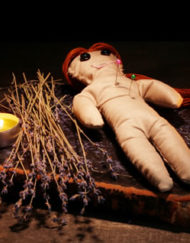

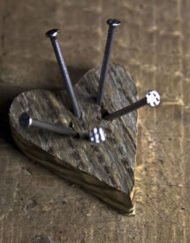
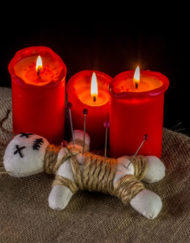
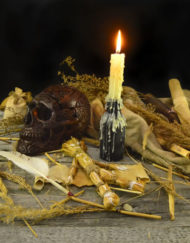

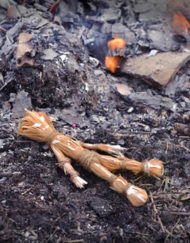


Voodoo is one of the most powerful form of magic and has been in existence for thousands of years.
I’ve worked with Voodoo a lot, but even though Voodoo spells enjoy such a high success rate at lightning speed in certain circumstances, it is extremely complex to perform.
That’s why I don’t cast spells no more, but honor the Law and still have my altars. Unlike the other magic spells that can be conducted by the normal individual, it is always safer and wiser to leave the Voodoo spells to the experienced hands of the Voodoo practitioners. They possess immense knowledge and experience in casting the spells, pulling down the probability for these love spells from backfiring.
That’s why I am here, I’ve been working with the Mambos for long and appreciate their knowledge, expertise and help.
Thanks for sharing your knowledge, I look forward to new posts, it helps me to stay positive and for a better understanding.
I really appreciate your blog articles. Like all other forms of magic, even voodoo magic has its share of believers and non believers; and it is only natural, because magic unless seen or experienced always seems surreal. I am so happy you made a believer out of me. Keep up the good work!
Have these spells worked for you? Which spells did you order?
Yes, they have. I had the breakup spell with a return lost lover spell and these spells led to my wife and her lover having problems. She even moved out and came back home. They were still seeing each other, though, at least 2 to 3 times a week. That’s when I added the Sex Curse and the spell to send someone away. He accepted a job offer on the East coast a month later.
My wife and I are back together. This really worked, it can’t be all coincidence, it just can’t.
Thanks. That’s great to hear and gives me much hope. I am waiting for the results of a return lost lover spell to kick in. There have been some signs and improvements, but he is not fully back (yet?). It’s only been 3 weeks so I hope it’s not taking much longer. I really miss him. Again, thanks for sharing.
Good luck! I am sure all will be fine.
Thank you, very informative.
Voodoo is associated with black magic?
No, not at all, especially not what you assume Black Magic to be. Voodoo has been practiced by Africans and Haitians for centuries. In the past, people cast voodoo spells for personal gains. However, modern day voodoo is used in a benevolent way without harming anyone and without evil intentions. It is 100% safe to use.
Voodoo from Africa and that from Haiti are different and for the most part are known as Louisiana voodoo and Haitian voodoo. Many are of the misconception that voodoo is only sticking pins into dolls. However, the modern concept of voodoo features spiritual healing, protection, voodoo hexes and even love and healing spells. I will be ordering from you again soon.
I am glad you have an article about this. There is so much more to Voodoo than is visible to the common eye. It is a well practiced religion of spiritualism, which has grown manifolds from the influences of the African countries and the Caribbean region.
Your blog is very helpful to me. I am a client of yours. In 2016 I ordered two spells from you that worked very well for me. Ever since, I am totally fascinated by Voodoo and started to work on the path of knowledge. I love to read about it, especially the history and the lwa. I will be ordering a new spell from you soon, looking very much forward to it. You are a true life-saver. Thank you.
Thank you for this article. I am a Priestess of Voodoo and come from old Creole roots, I agree with what you write. I wish you and your clients much success in your spiritual journey. In closing I will say that Voodoo is a private practice for many of us, it’s important that practitioners share their knowledge.
Great post. Very informative.
If you are willing to place your destiny in the hands of the spirits in order to change the course of your life then voodoo spells may be the answer to your needs. Getting to know Voodoo through your spell work has been such a life-altering experience for me. Thank you!
What I appreciate most about Voodoo is that men and women are allowed to be initiated into priesthood. This is not so common in other religions. They both have equal the authority to cast voodoo spells for healing the sick, love spells, protection spells, spells for religious ceremonies and more.
What I find really interesting is that most of these rituals are performed outdoors with drums, music, and dancing, and that’s a common feature at every ritual. One day I want to be part of your annual gathering in California. My sister participated once in the late 90s, and she still raves about it. I hope you will offer one again in the near future?